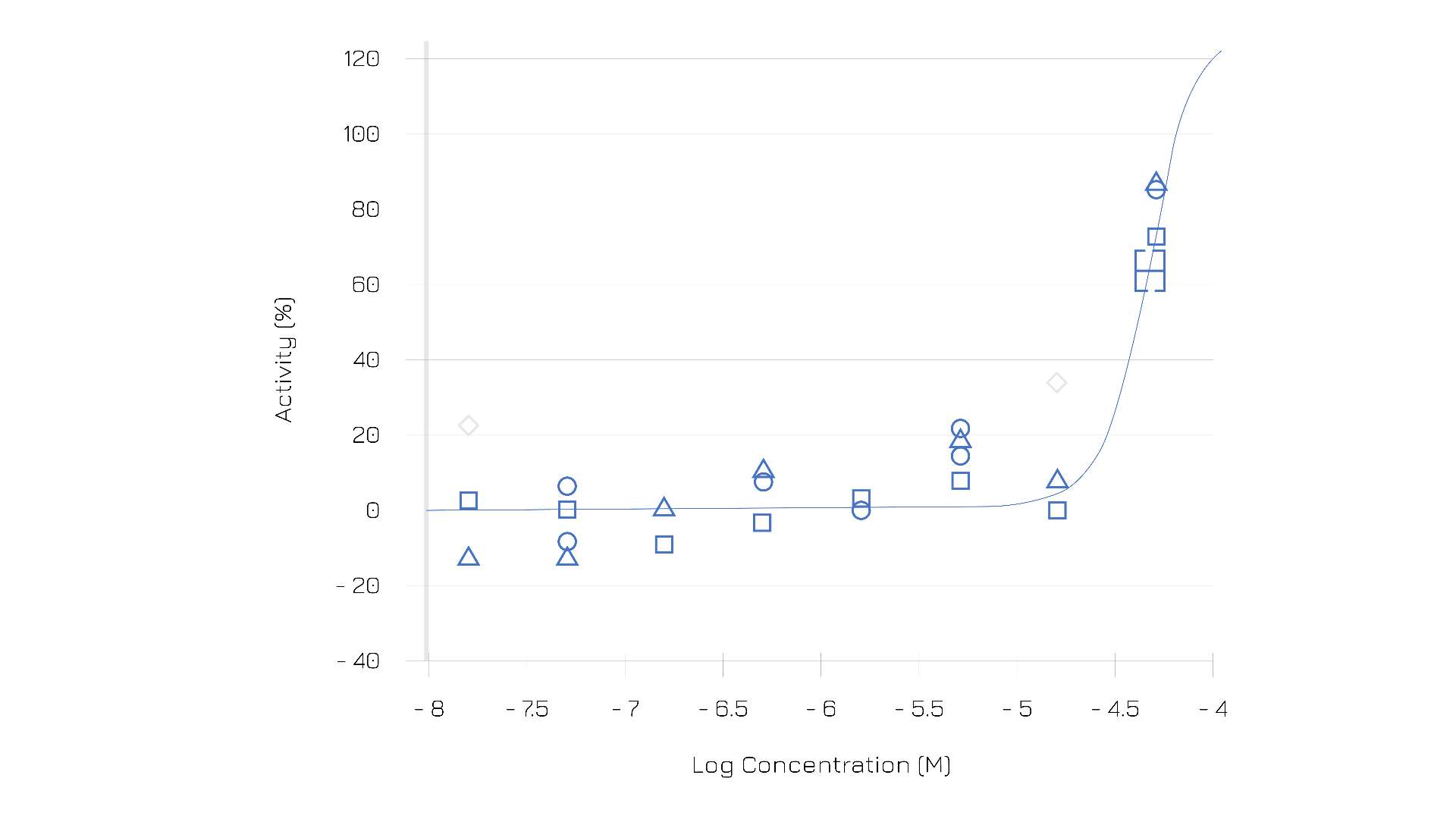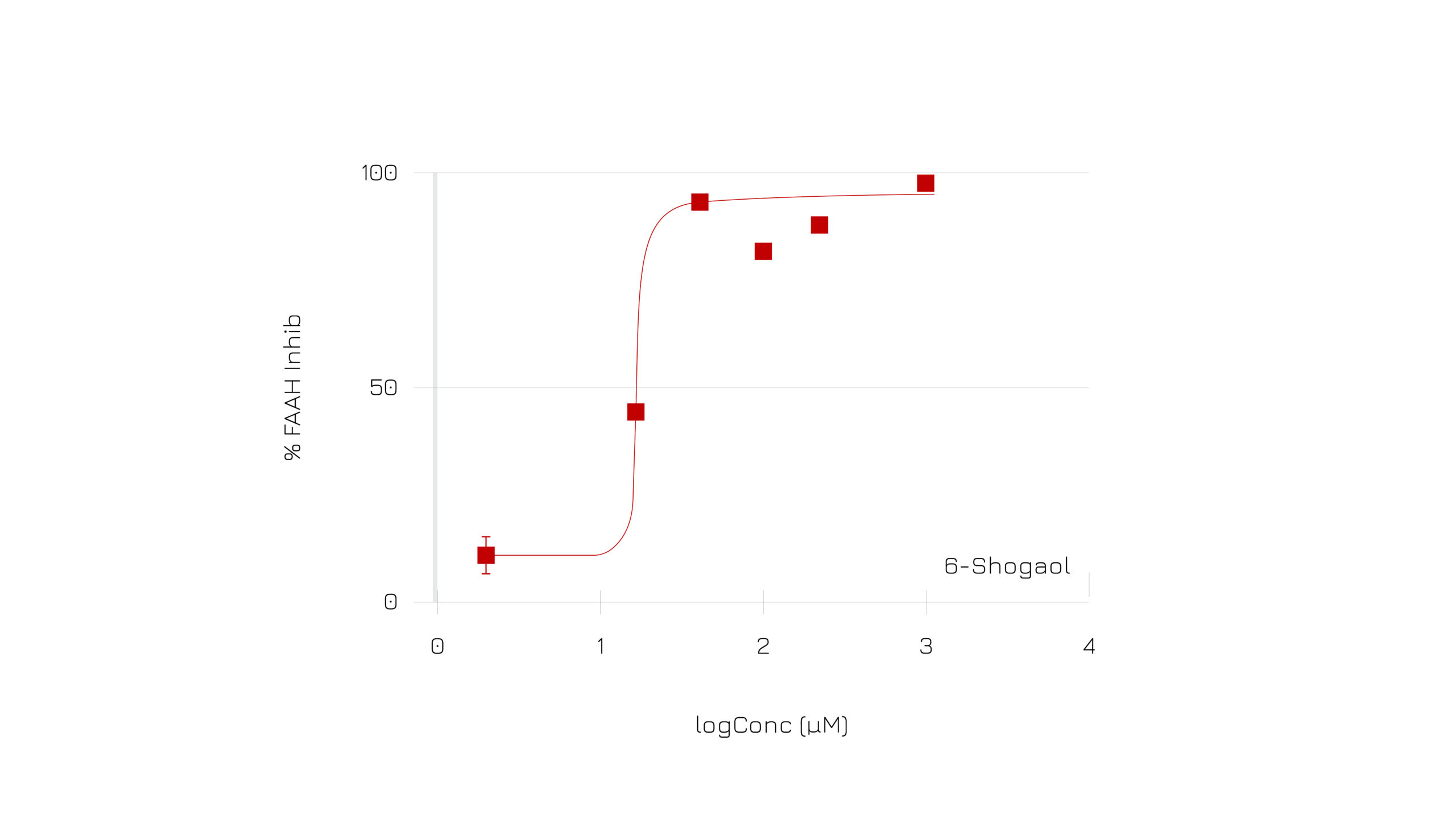Mitidol®
Browse all Indena’s documents about products, events, company information and so much more.
Go to sectionPeer-reviewed science on Mitidol®
The new food-grade formulation of Acmella oleracea and Zingiber officinale was tested in 2 in-vitro assays in order to verify its effect on endocannabinoid system, particularly investigating the interaction with CB2 receptors and fatty acid amide hydrolase (FAAH).
The endocannabinoid system is in fact implicated in several physiological mechanisms. The direct interaction with CB2 receptors and the inhibition action on the FAAH enzymes are the key mechanisms for evaluating the biological activity of a substance on this path.
The Mitidol® formulation demonstrates positive effects on both the biological targets, unrevealing the possible mechanism behind its action against various discomforts.
Figure 1: Mitidol® activity on Human CB2 cells (EC50= 44 µg/ml).
Figure 2: Shagaol (Zingiber molecular component) inhibitory activity on FAAH (IC50= 21.1µM)
A 1-month human study was put in place to show Mitidol®’s efficacy in supporting knee functionality and comfort. 50 subjects with knee challenges were selected for the study and received 30-day supplementation with Mitidol®.
Main results as individual and objective evidence:
Optimization of knee functionality confirmed in 2 different tests: Lhysolm and Womac scale
Mitidol® was effective as support in knee-ache intensity management already after 10 days of supplementation.
Effective on Quality of Life score (SF-36 questionnaire)
Physical activity support.
Healthy inflammatory response control, possibly causing discomfort: - 12.7% erythrocyte sedimentation rate; - 36.4% high sensitivity CRP (C-Reactive Protein).
Recent scientific evidence has shown that when subjects under medical cannabis treatment are supplemented with a combination of Coenzyme Q10 (such as Indena's Ubiqsome®) and Mitidol®, they report a significant beneficial effect.
Those results are a strong rationale for the use of Mitidol® as a natural adjuvant in supporting ache relief.
BIBLIOGRAPHY
1Petrangolini G. et al., J Nutr Food Sci, 10:766 (2019)
2Rondanelli M., et al., Journal of Pain Research, 761-70 (2020).
3Poli P. et al., Evidence-based complementary and alternative Medicine 2022(1) 7099161 (2022).
Sorry, our website doesn't support IE11 and older versions
For a better experience try a modern browser:
This is a private file, to request the download of this resource, please fullfill the fields below.

